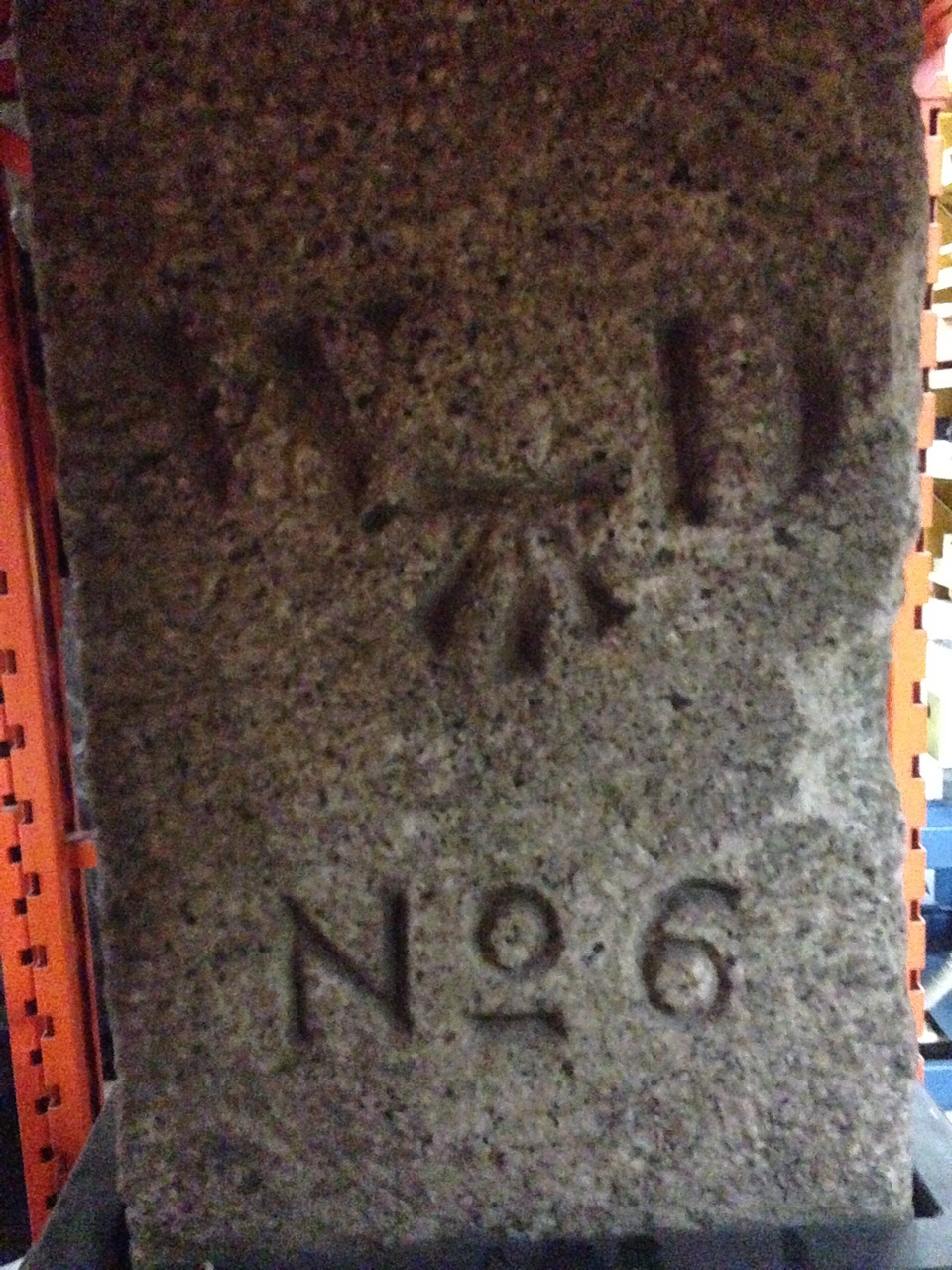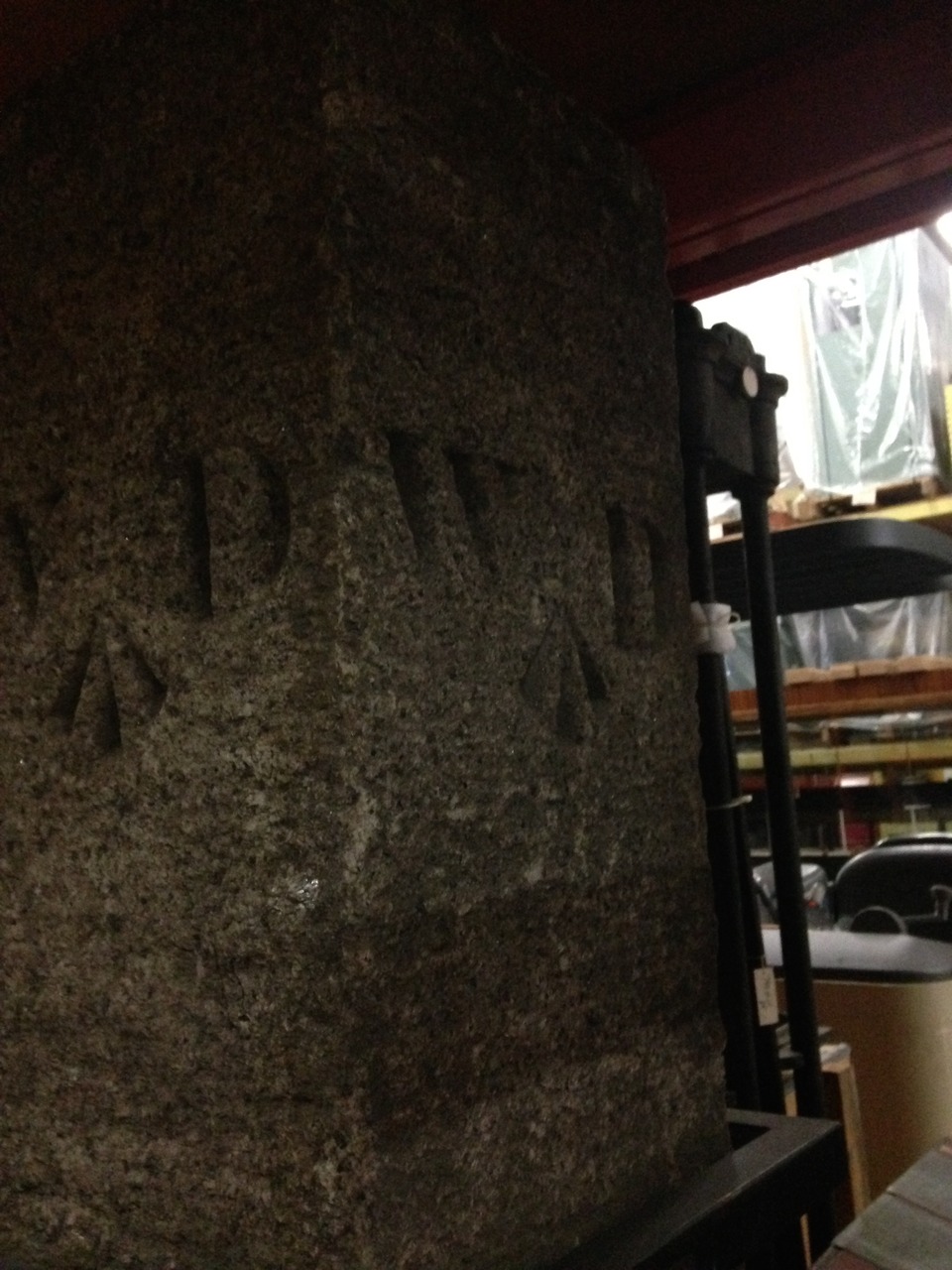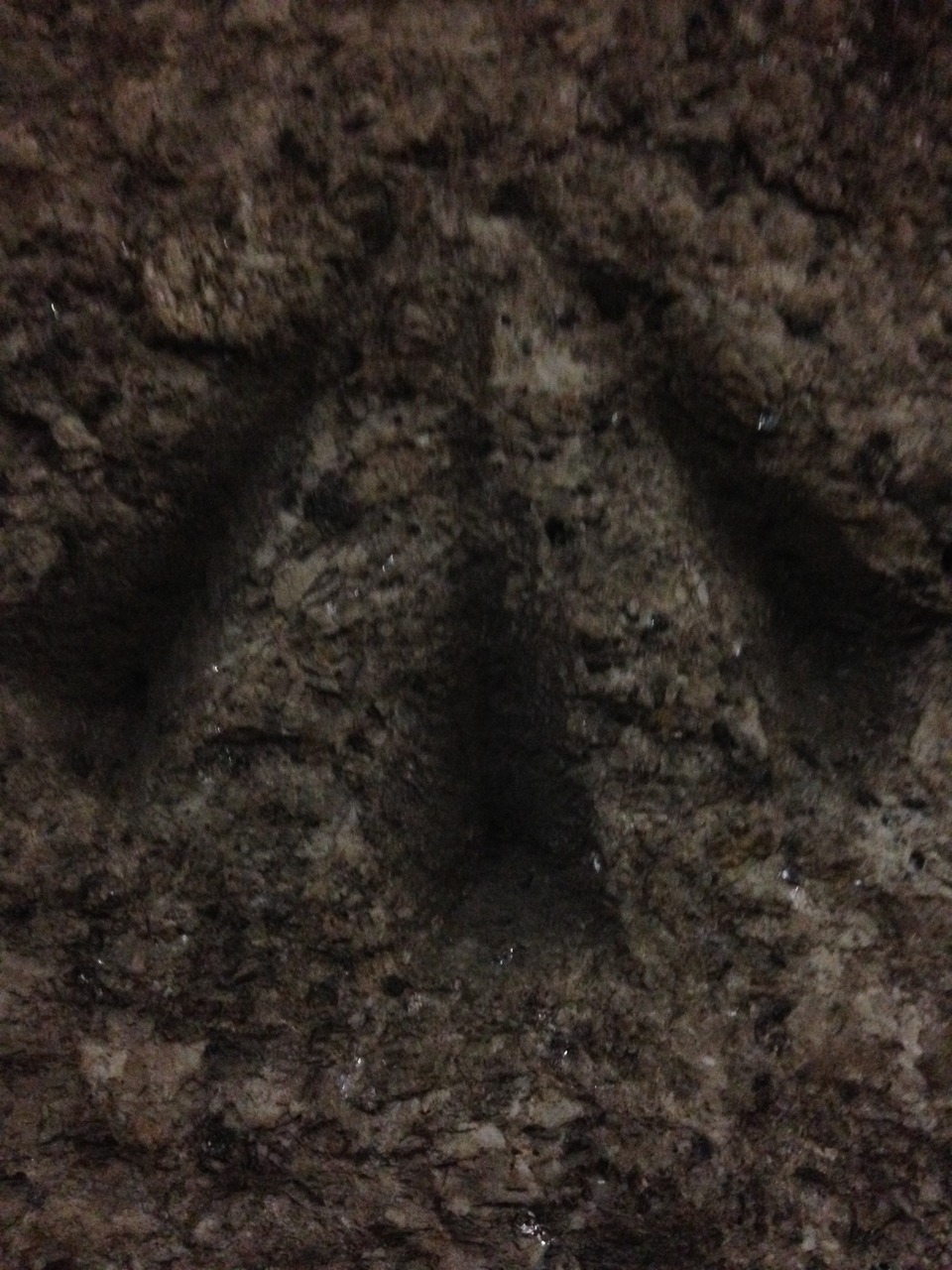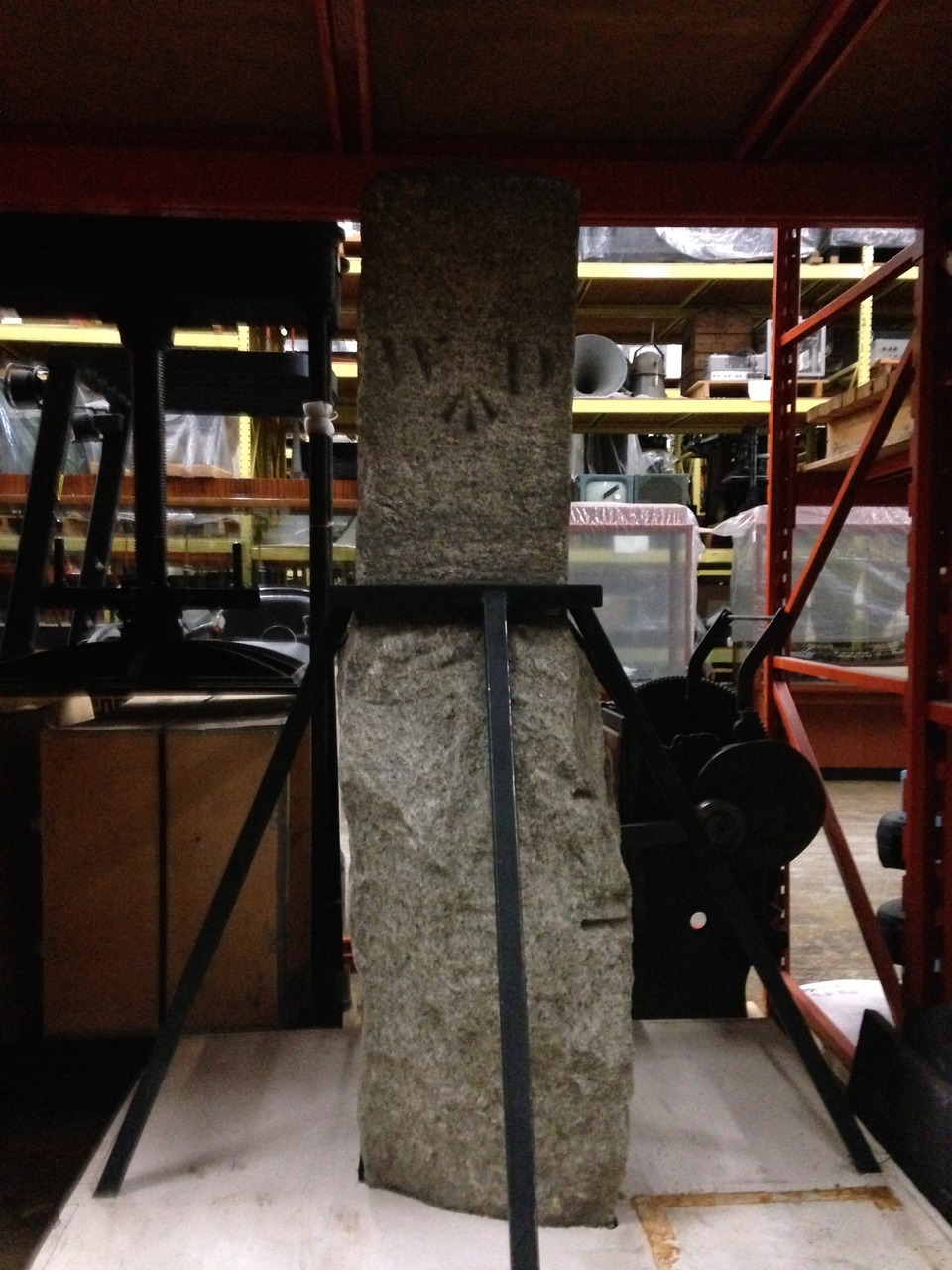Dublin Core
Title
Meaning in Markings and Material
Description
Unlocking the secrets of this artifact starts by looking at some of the clues on the monument itself. Its material and markings take us back to British North American History and the defence of the Halifax Harbour.
This survey marker is made of granite: a durable stone resistant to damages caused by the elements. This particular monument was in Point Pleasant Park, right on the ocean, therefore it was important for this monument to be resistant to high winds and precipitation coming through at all times of the year.
The markings on the monument help us understand another reason behind its material composition. The marking “W.D.” can be found on all four sides of the monument. “W.D.” stands for “War Department.” In fact, as we shall learn, defence of the Halifax harbour was a key concern for the British Military from 1749 to 1867. This monument also has the marking “No. 6”: it is the sixth in a collection of eight survey markers installed in this area in 1895 as part of the British War Department “perambulation plan.” Granite is a common material used for most War Department boundary markers throughout North America.
On all sides of the monument we find the marking of a broad arrow. The broad arrow is a symbol that designated it as governmental property according to the Public Stores Act of 1875.
The monument, which was collected in 1965 by D. K. MacDonald, was henceforth mounted on a wooden base supported by black metal rods. It has since been a part of the Canadian Landmarks Collection established by Ralph W. Clark in 1952.
This survey marker is made of granite: a durable stone resistant to damages caused by the elements. This particular monument was in Point Pleasant Park, right on the ocean, therefore it was important for this monument to be resistant to high winds and precipitation coming through at all times of the year.
The markings on the monument help us understand another reason behind its material composition. The marking “W.D.” can be found on all four sides of the monument. “W.D.” stands for “War Department.” In fact, as we shall learn, defence of the Halifax harbour was a key concern for the British Military from 1749 to 1867. This monument also has the marking “No. 6”: it is the sixth in a collection of eight survey markers installed in this area in 1895 as part of the British War Department “perambulation plan.” Granite is a common material used for most War Department boundary markers throughout North America.
On all sides of the monument we find the marking of a broad arrow. The broad arrow is a symbol that designated it as governmental property according to the Public Stores Act of 1875.
The monument, which was collected in 1965 by D. K. MacDonald, was henceforth mounted on a wooden base supported by black metal rods. It has since been a part of the Canadian Landmarks Collection established by Ralph W. Clark in 1952.
Source
Photo taken by Jessica Ozorak at Museum of Science and Technology.
Contributor
Canada Museum of Science and Technology
Identifier
Item: 730805. (Point Pleasant Park, Halifax, NS Marker). Photograph taken by Jessica Ozorak. Canada Museum of Science and Technology.



